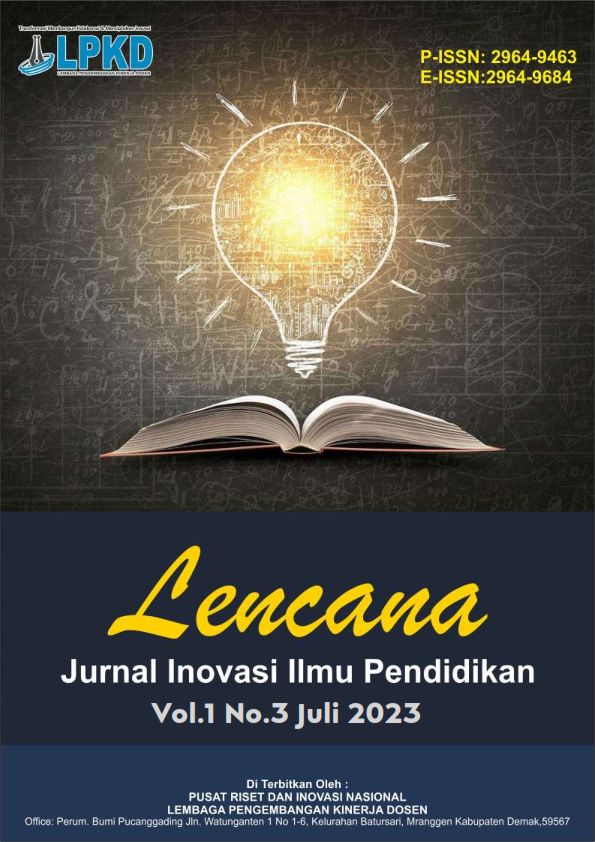Komparasi Deiksis Dialek Gantarang dan Dialek Kajang Kabupaten Bulukumba
DOI:
https://doi.org/10.55606/lencana.v1i3.1832Keywords:
Pragmatics, Deixis, Gantarang dialect, Kajang dialectAbstract
Comparison of Deiksis of Gantarang Dialect and Kajang Dialect of Bulukumba Regency. The purpose of this study was to describe the deixis use of the Gantarang dialect and the Kajang dialect of Bulukumba Regency. This type of research is descriptive qualitative research, which produces descriptive data in the form of written words strung together in a sentence into a single language unit. The data used as the basis for this research is in the form of words or sentences expressed by speakers. The source of the data collection came from native speakers of the Gantarang dialect (Bugis language) and the Kajang dialect (Konjo language). The data collected in the qualitative descriptive analysis is in the form of words, and sentences are not in the form of numbers. Qualitative descriptive research aims to build a natural perception of an object, so researchers get closer to the object as a whole. Based on the data, the results of the research in analyzing the deixis comparison of the Gantarang dialect (Bugis language) and the Kajang dialect (Konjo language) have the same words in terms of sound, pronunciation and meaning, namely the words puang and mate, meanwhile, apart from the words puang and mate, other data have differences both in terms of sound, meaning, pronunciation or pronunciation besides that both languages pay great attention to the level of politeness when speaking especially if the speech partner is an older person, and also if the speech partner has a certain social stratum or degree in society such as someone from royal lineage. Gantarang dialect (Bugis language) found five deixis namely persona deixis, time deixis, place deixis, discourse deixis, and social deixis. Meanwhile, in the Kajang dialect (Konjo language), five deixis are found, namely persona deixis, time deixis, place deixis, discourse deixis, and social deixis.
Downloads
References
Abdullah, A. (1992). Intisari Tata Bahasa Indonesia. Bandung: Djatnika.
Azmin, A. M. (2018). Analisis Deiksis dalam Novel Surga yang Tak Dirindukan: Kajian Pragmatik. Universitas Negeri Jakarta.
Hasmiyanti, N. (2019). Analisis Deiksis dalam Bahasa Sasak pada Masyarakat di Desa Maluk Kecamatan Maluk Kabupaten Sumbawa Barat. Universitas Muhammadiyah Mataram, Mataram.
Rohmadi, M. (2020). Analisis Wacana Pragmatik. Surakarta: Yuma Pustaka.
Salamun, T. (2017). Deiksis Persona Bahasa Indonesia Dialek Ambon [Personal Deixes of Indonesian Leanguage with Ambonese Dialect]. Totobuang, 5(2), 325–339.
Yule, G. (2016). Pragmatik (Terjemahan Rombe Mustajab). Yogyakarta: Pustaka Pelajar.








